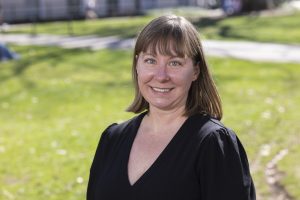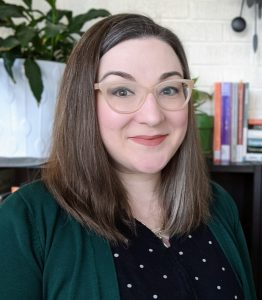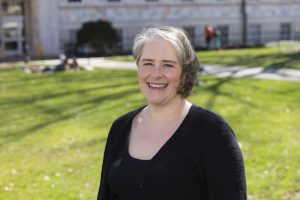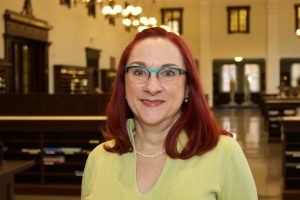Introduction

Digitizing our unique cultural heritage collections and making them easily discoverable and accessible around the globe are priorities for archives and special collections. Increasingly, our users expect that our collections be digitized and available online, and our donors similarly assume that their collections will be available on the web once they are donated. For repositories with an educational or research mission, providing open and equitable access to our collections requires expanding access to all users, not just those who can afford to travel to our reading rooms or who are able to take time during a work week to consult our collections. For most cultural heritage institutions, creating and maintaining robust digital access to our collections are critical components of fulfilling our mission and meeting our users’ needs, but we often struggle to scale our digitization programs to meet these expectations.
While most institutions share the goal of digitizing and disseminating the unique resources in our collections, traditional digitization workflows limit our ability to do large-scale digitization. Selecting, imaging, describing, and assessing rights for digitized content can be enormously resource-intensive and time-consuming. Rights clearance work, in particular, is highly labor-intensive, requires specialized knowledge, may require significant research, and has traditionally been conducted at an object level. Because of these complexities, determining copyright status and managing licensing and permissions workflows for copyrighted work are areas that have proved particularly challenging and time consuming for many institutions, and have led us at Emory University Libraries to reassess and ultimately reimagine new copyright workflows that move from object-level rights clearance to assessing and managing risks and rewards associated with digitization. In our efforts to rethink our approach to managing rights workflows in order to facilitate larger-scale digitization, we brought together archivists and scholarly communications librarians to propose practical strategies for making collaborative, thoughtful decisions about copyright and other risks to scale-up digitization programs in a sustainable and responsible way.
One strategy to achieve this goal is designing policies and workflows that address the many legal, ethical, and practical risks related to copyrighted, private, or restricted material in our collections by assessing and managing risks categorically rather than at an item level. We recognize that while risk is inherent to digitization, not all risks are equal. By looking at collections categorically, it is possible to make some broad-brush assessments about where you might encounter various types of risk and how to identify the types of risks you or your institution are and are not willing to incur. We hope that this resource will be useful for any cultural heritage organization interested in coordinating a digitization project or program using a risk-management rather than a risk-negation approach. The tools and insight in this resource are intended to help organizations make thoughtful, informed decisions about how to implement risk-analysis frameworks and workflows to perform rights analysis at scale. Ultimately, we hope that these tools will help our institutions maximize the amount of material we can make available online while working within our institutions’ risk-comfort zones.
Project Background
From 2019 to 2021, the authors worked on an internal project at Emory University Libraries to develop a streamlined cross-functional workflow for copyright assessment for building digital collections (see Chapter 6: Case Study: Emory University Libraries). We believe that the evaluative steps taken and lessons learned in completing this project can be valuable to the broad profession in considering how to manage copyright evaluation as digital collections grow in size, complexity, and scale.
Through the support of the Scholarly Communications Notebook, we offer this open educational resource (OER) to the cultural heritage community with the hopes that it will help others develop effective digital collections workflows. This OER provides practical tools for scholarly communications and archival colleagues to work together to develop shared workflows, expertise, and tools to manage approaching rights and risk assessment in a scalable way. If you work in an organization that does not have scholarly communications experts, this resource is still a useful and practical guide for archivists and generalist librarians to make decisions around digitization and rights analysis.
The OER was open for public comment from August 1, 2022, through November 23, 2022. Based on feedback from the community, we revised it and published the first edition on the Pressbooks instance at the University of Kansas (KU). Ongoing questions or comments can be shared at FindingBalanceOER@gmail.com.
The Team[1]

Carrie Hintz is the associate director of the Stuart A. Rose Manuscript, Archives, and Rare Book Library at Emory University Libraries where she provides vision and leadership for all aspects of library operations, including archival processing, digital collection management, and research and engagement activities. She has led special collections technical services programs at Emory University’s Rose Library and Columbia University’s Rare Book & Manuscript Library. (ORCID iD: https://orcid.org/0000-0002-3040-2145)

Melanie T. Kowalski was the copyright and scholarly communications librarian for Emory University Libraries from 2013–2022. In this role, she was primarily responsible for copyright outreach, education, and consultation with faculty and students. Additionally, she was responsible for copyright consultation and analysis for digitization and managing rights metadata within the Libraries. In February 2022, Melanie moved on to a new role as the open knowledge licensing coordinator for the Center for Research Libraries, where she is working to operationalize an open knowledge strategy for licensing library content and serves as the primary resource for copyright information policy. (ORCID iD: https://orcid.org/0000-0002-1815-9410)

Sarah Quigley was the head of collection processing at the Stuart A. Rose Manuscript, Archives, and Rare Book Library at Emory University Libraries from 2019–2022. Prior to this, she was a manuscript archivist at the Rose from 2011–2019 and came to this project with significant experience processing collections and providing strategic oversight of the library’s processing program. In July 2022, Sarah became director of Special Collections and Archives at the University of Nevada, Las Vegas, Libraries where she provides vision and leadership for the division, including collection development, digital collections, public services, and technical services departments. (ORCID iD: https://orcid.org/0000-0001-7186-6483)

Jody Bailey is the head of the Scholarly Communications Office at Emory University Libraries and leads a team of librarians and library specialists who are responsible for all library services surrounding copyright, open access and publishing, research data management, and open educational resources. The team also manages two scholarly repositories for Emory faculty and students. Before joining Emory University Libraries in 2018, Jody was director of publishing at the University of Texas at Arlington Libraries where she oversaw all publishing and open education services. (ORCID iD: https://orcid.org/0000-0002-4226-4173)
The Method
The project team used Google Docs for developing documentation for this OER, including meeting notes, outlines, schedules, and drafts. While we did evaluate several platforms for publishing this OER, we determined that Google Docs was the most appropriate tool to utilize for the open peer review portion of the project. All project meetings were held via Zoom from February 2022 through August 2022.
The project team utilized the following project plan to complete this OER:
- Brainstormed several options for publishing/presenting our work to the broader cultural heritage community.
- Held several brainstorming sessions to document the following project components:
- Form (i.e., book, course module, interactive tool, etc.)
- Timeline
- Content
- Structure
- Applied for and received support from the Scholarly Communications Notebook (SCN) to develop an OER to help guide students and practitioners in this work.
- Modified project components based on the needs/specification of the SCN supporting grant
- Executed a project timeline
- Developed an outline of content
- Evaluated a publication platform
- Developed and revised a style guide document
- Assigned initial drafting pairs for each section
- Assigned initial reviewing pairs to review and comment on section drafts
- Drafting pairs reviewed and revised based on reviewing pairs feedback
- Conducted independent read through
- Participated in several revision sessions to resolve final outstanding comments and revisions
- Conducted final independent read through
- Published draft version for open peer review as a comment-only, publicly available Google document with instructions for review and comment
- Published final version on the University of Kansas Pressbooks platform
Acknowledgements
This work was developed as part of the Scholarly Communication Notebook initiative led by Josh Bolick, Maria Bonn, and Will Cross and funded by the Institute of Museum and Library Services (IMLS) grants LG-72-17-0132-17 and LG-36-19-0021-19. We thank our colleagues and IMLS for their support.
We thank the following colleagues for their support in the development of this work.
- Jennifer Gunter King (director of the Stuart A. Rose Manuscript, Archives, and Rare Book Library at Emory University Libraries) and Lisa Macklin (associate vice provost and university librarian at Emory University Libraries) chartered the task force that we all worked on, and they both gave us valuable help and feedback as we iteratively developed the workflows and tools.
- Workflow beta testers in the Rose Library, including Laura Starratt (senior collections archivist), who graciously tested an early prototype of the Post-Processing Rights and Risk Report, and Katherine Fisher (head of digital archives), who was an enthusiastic partner in socializing and implementing the workflow.
- Readers who reviewed and provided helpful comments on the beta version of this work in fall 2022.
We also extend our gratitude to the University of Kansas Libraries, which hosts the Pressbooks version of this book.
Final Note
Some browsers struggle to open hyperlinks in the embedded version of this book on OER Commons. If you have this issue, please access the original publication on Pressbooks at https://opentext.ku.edu/findingbalance/
- Important note: None of us are attorneys, and nothing in this document should be taken as legal advice. If you need legal advice, please seek the counsel of an attorney specializing in intellectual property law. For information on working with your general counsel’s office, see Chapter 2: Identifying Your Institutional Risk Tolerance. ↵

